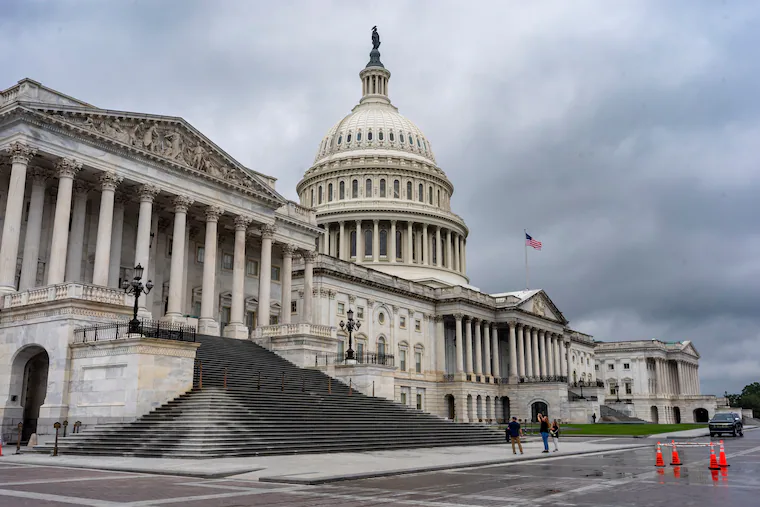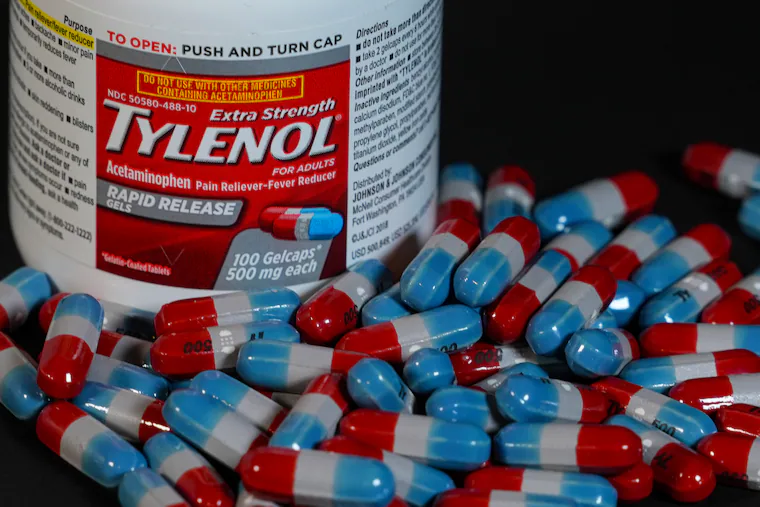
Pennsylvania school districts are taking out loans to keep schools running. Counties have had to furlough staff. Now, add to the state budget impasse a federal government shutdown threatening Pennsylvanians’ paychecks and some critical social service benefits.
Welcome to the swing state of dual governmental dysfunction, where legislative standoffs at two levels could cause headaches for residents whose distrust in government and frustration with polarization has only grown.
The state budget impasse — with the funding plan nearly three months overdue — has held up billions of dollars in state payments for critical government services, from public schools to county behavioral health programs. The late budget, which is largely due to partisan disagreements between the GOP-controlled state Senate, Democratic-controlled House and Democratic Gov. Josh Shapiro, has required many schools to take out loans to keep operating, and some counties have been forced to furlough staff or freeze spending.
Now, Congress looks unlikely to meet its Oct 1. deadline to fund the federal government, leaving Pennsylvanians bracing for a political pileup that threatens to stall paychecks and shutter services in one of the only states with a divided state government.
“It takes disappointed and disillusioned Pennsylvanians and gives them one more data point that makes questions about the viability of their institutions real,” said Chris Borick, pollster at Muhlenberg College.
While Republicans control both chambers of Congress, Senate rules require a 60-vote threshold on the funding bill which majority Republicans can only achieve with Democratic support.
Bipartisan consensus is proving as elusive in Washington as it is in Harrisburg
Only one other state in the country faces a similar situation — fellow swing state Michigan, which also has a divided legislature — though lawmakers there appeared on track to finalize a state budget deal this week.
It’s a “double whammy,” said Alison Dagnes, political science professor at Shippensburg University, at a time when polls show eroding trust in government.
“American politics at every level is predicated on the ideals that the people matter and that our elected officials will be responsive,” Dagnes said. “When that trust breaks … once we lose that, we get into ‘Hunger Games’ territory.”
Shapiro said he understands why Pennsylvanians would be frustrated with the state budget impasse, but he argued that blame should fall on lawmakers, particularly Senate Republicans, for rarely meeting in Harrisburg this year.
“I can propose the budget, as I did 238 days ago. The budget needs to be voted on, and then it gets signed,” Shapiro said Tuesday at a news conference outside Harrisburg. “I can sign it. I can propose it. I can’t vote on it.”
Two frozen budgets
It’s unclear if Pennsylvania has ever faced a simultaneous state budget impasse and a federal shutdown. The two have not overlapped in recent history, and three political historians in the state could not recall it happening before.
If a shutdown occurs, some programs that rely on federal and (currently frozen) state funding could be impacted. Programs like Head Start, the early education and Pre-K program, receive money from both state and federal sources.
Head Start programs, which educate nearly 30,000 children in Pennsylvania from low-income families from birth through age 5, have traditionally still been able to access their federal funding during a federal shutdown, said Kara McFalls, the executive director of the Pennsylvania Head Start Association.
But the state budget impasse has led many of the early education providers across the state to reduce staff, reduce working hours, or secure outside financing at high interest rates to continue operating during the monthslong state budget impasse.
“The situation is particularly dire here in Pennsylvania,” she said. “Our children cannot wait. These are opportunities of early learning that are once-in-a-lifetime.”
Many nonprofits providing healthcare services related to mental health, substance abuse treatment, and domestic violence prevention, also receive state and federal funds.
“Some of the nonessential services that would be cut in a federal government shutdown, are the same services that are being strained by the state government shutdown,” said Berwood Yost, a pollster at Franklin & Marshall College.
In the case of a federal shutdown, essential services related to national security and air travel would continue but workers would work without paychecks, which can cause staffing levels to drop and services to be impacted. Programs like Social Security, Medicare and veterans services are also likely to slow down.
National Parks, including Independence National Historic Park where the nation’s (currently sputtering) governmental system was born, won’t be open to visitors.
The last federal government shutdown in 2018, during President Donald Trump’s first administration, lasted more than a month, the longest on record.
This shutdown could have longer-lasting consequences, Trump has warned. In an unprecedented step, he’s threatened to permanently cut some positions that would otherwise have only been temporarily disrupted under past shutdowns if Democrats don’t vote with Republicans, adding tensions to negotiations in Washington.
Pennsylvania has more than 100,000 federal workers, as well as 7,800 state employees whose salaries are paid for by the federal government. Hundreds of thousands rely on the programs that could be impacted.
None of that bodes well for people hoping to see their tax dollars at work. And it builds on 20 years of growing disillusionment with government, polling shows.
“Our never-changing mood over the last 20 years has been pessimism,” Yost, who has polled on how people view their government, said.
Who gets blamed?
Partisan voters tend to blame everything, including a shutdown, on the opposing party. People without a strong tie to one party or the other, tend to blame the party in power.
But with public frustration so high, there’s also the possibility people just tune out completely.
“When the public waves its hand and says I’m sick of all this and they blame both sides what they tend to miss …are real world consequences to people,” Dagnes said.
Democrats think Republicans, who are in control of the House, Senate and the White House, will bear the brunt of the blame if a funding bill doesn’t pass.
Republicans argue if Democrats don’t support a bill that could have funded the government, they’ll be seen as the guilty party.
Sen. Dave McCormick (R., Pa.) pointed to Democratic support for past continuing resolutions and called their resistance this time “a political stunt.”
U.S. Rep. Madeleine Dean, a Democrat who represents Montgomery County, stressed the Republicans are in the majority.
“I’ll remind you again, they have the House, they have the Senate, they have the presidency. If this is such a winning path for them, why can’t they get it done?”
Early polling from Morning Consult appears to support the Democrats’ theory of the case with 45% of voters in September saying they’d blame Republicans and 32% saying they’d blame Democrats for a shutdown.
Democrats are also trying to make the moment about restoring some Medicaid cuts and saving expiring healthcare subsidies in exchange for the Senate votes needed to pass the government funding bill.
“Health insurers are setting rates now for next year, so Pennsylvanians can’t wait until December 31 to find out if the Republicans who have total control of Washington will extend the health-care subsidies that make their coverage affordable,” U.S. Rep. Dwight Evans said in a statement.
Democratic leaders are determined, they’ve said, to hold the line after enough Senate Democrats joined Republicans in the Spring to pass a temporary budget bill. Sen. John Fetterman (D., Pa.) has said that while he wants the tax credits extended, he plans to break with his party and vote with Republicans if it means averting a shut down.
“I’ll never vote to shut our government down over that or any reason,” he wrote on X. “It’s a core responsibility of Congress to maintain a functioning government and I refuse to hold it as hostage.”
The last shutdown also began at a time when Republicans controlled both chambers of Congress in December of 2018, but Democrats went into that fight with arguably more leverage as they were set to take control of the House in January of 2019.
Lingering effects
Whether voters remember the impact of a budget impasse or a government shutdown in 2026 or 2028 remains to be seen.
The state budget standoff has gotten far less attention, in terms of political implications since the threat to SEPTA was temporarily resolved. And because in Pennsylvania funding largely still flows during a state budget impasse, the freeze has less of an impact than a federal shutdown.
It’s also become common for Harrisburg to miss its deadline, making the blame game we’re seeing play out in Washington less of a salient conversation at the state level.
It could stay that way so long as the state government remains divided.
One state lawmaker, Rep. Clint Owlett (R., Tioga), told his local chamber of commerce Pennsylvanians should stop expecting on-time budgets.
“That’s not how it works anymore,” Owlett said. “It should … but that is not the way it’s going to work, at least in the next few years.”



